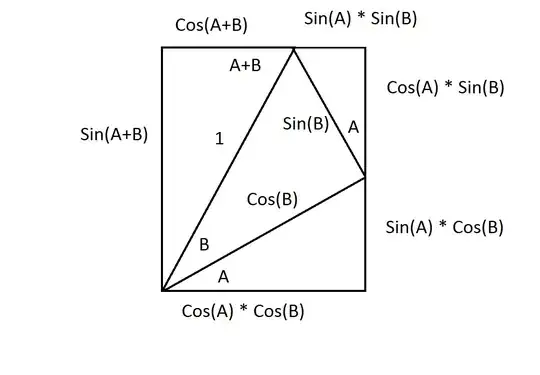Take $A$ and $B$ on the unit circle, so that $A(\cos\theta;\sin\theta)$, $B(\cos\varphi;\sin\varphi)$.
Then $AB^2=(\cos\theta-\cos\varphi)^2+(\sin\theta-\sin\varphi)^2=2-2\cos\theta\cos\varphi-2\sin\theta\sin\varphi$
On the other hand, we apply the cosine rule to $\Delta AOB$, where $O$ is the origin: $AB^2=1^2+1^2-2\cdot 1\cdot 1\cos(\theta-\varphi)$. Hence the result
$$\cos(\theta-\varphi)=\cos\theta\cos\varphi+\sin\theta\sin\varphi$$
Then we derive $\cos\left(\frac{\pi}{2}-\varphi\right)=\sin\varphi$ and plug it into the other derived equation:
$$\begin{align}\sin(\theta-\varphi)&=\cos\left(\frac{\pi}{2}-\theta-(-\varphi)\right)\\&=\cos\left(\frac{\pi}{2}-\theta\right)\cos\varphi-\sin\left(\frac{\pi}{2}-\theta\right)\sin\varphi\\&=\sin\theta\cos\varphi-\cos\theta\sin\varphi\end{align}$$
To say, we can obtain the cosine rule without using that formulas.
